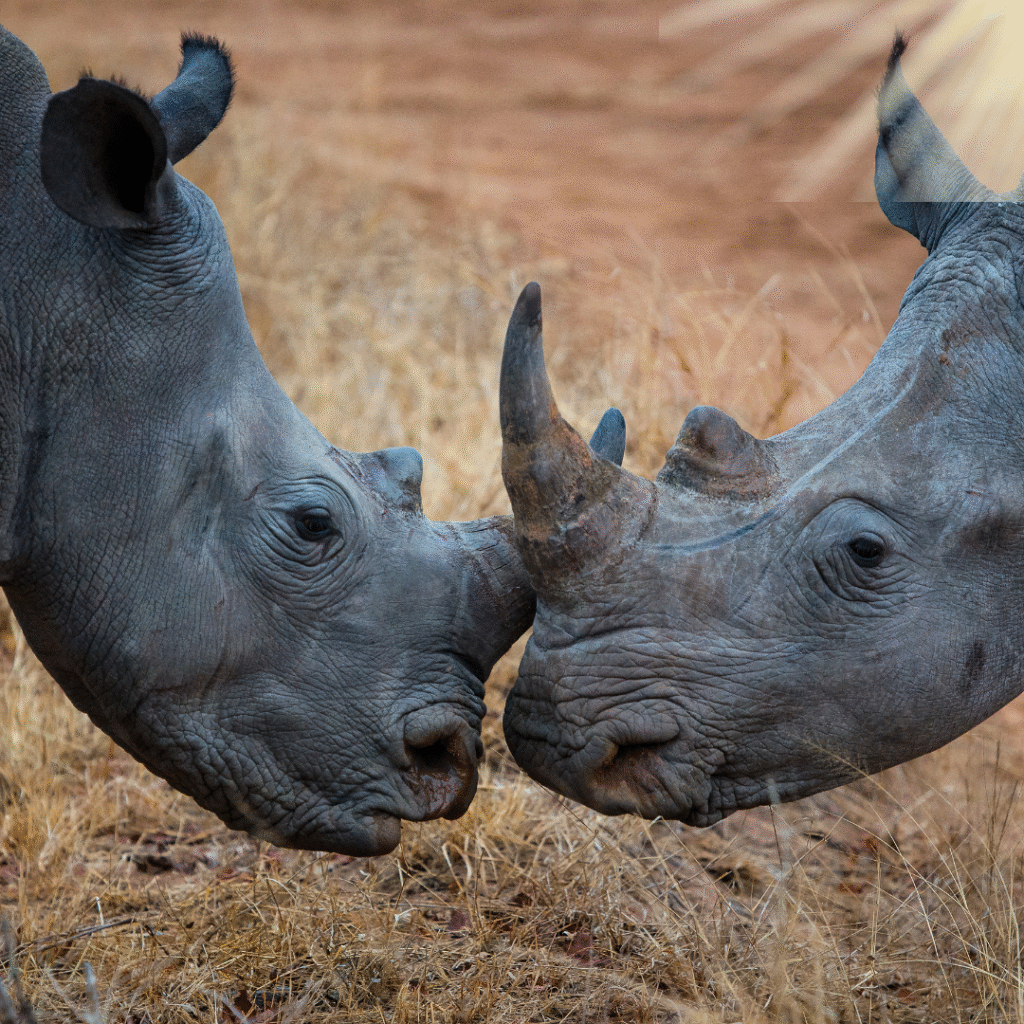
This children’s article, Radioactive rhino horns: The unusual new plan to stop poaching, has been written for native English speakers and learners of English as a second or foreign language. It can help children build vocabulary, learn about rhinos, and discover creative ways scientists protect wildlife. Written by Mark Pulley, a teacher and writer who creates fun and informative news articles for English learners.
A strange but safe idea
In South Africa, scientists have started something unusual to protect rhinos from poachers. They are putting tiny, harmless radioactive chips into rhino horns. Don’t worry, it doesn’t hurt the animals at all, and the radiation is too low to harm them or the environment.
The idea is simple: the chips can be detected at border crossings around the world. If a poacher tries to smuggle a horn from one country to another, it should set off alarms, helping police catch the criminals.
Years in the making
This new approach is part of the “Rhisotope Project” and has taken six years of careful research and testing. Last year, scientists tried it with a small group of rhinos, and it worked so well that they are now protecting more rhinos across the country.
To do the procedure, the rhino is gently put to sleep so it feels no discomfort. Then two tiny radioactive chips are inserted into the horn.
Why rhinos are in danger
Rhino horns are sadly worth a lot of money on the black market. Per gram, it’s even more expensive than gold. Many horns are sent to parts of Asia, where they are used in traditional medicine or as a sign of wealth.
South Africa is home to the largest rhino population in the world, but more than 400 rhinos have been poached there each year since 2021. There are two African species: white rhinos, which are threatened, and black rhinos, which are critically endangered.
A brighter future for rhinos
The team hopes this new technology will make rhino horns worthless to poachers. If the project works on a large scale, it could save hundreds of rhinos each year. As project leader Jessica Babich says, protecting rhinos also means protecting an important part of Africa’s natural heritage.

Article vocabulary list
- Poacher – a person who hunts animals illegally
- Radioactive – giving off tiny amounts of energy called radiation
- Detect – to discover or notice something
- Black market – illegal buying and selling of goods
- Threatened – at risk of becoming endangered
- Critically endangered – in serious danger of disappearing completely
- Procedure – a set of actions done in a certain way
- Heritage – something valuable passed down from the past
Comprehension questions
Just click the plus (+) to see the answer
1. What is the Rhisotope Project trying to stop?
A) Rhino poaching
B) Pollution in rivers
C) Deforestation
Answer: A) Rhino poaching
2. Where are the radioactive chips placed?
A) In the rhino’s ear
B) In the rhino’s horn
C) In the rhino’s tail
Answer: B) In the rhino’s horn
3. How do the chips help catch poachers?
A) They glow in the dark
B) They make the horn too heavy to carry
C) They set off detectors at borders
Answer: C) They set off detectors at borders
4. How many rhinos are poached in South Africa each year since 2021?
A) More than 400
B) Around 40
C) About 4,000
Answer: A) More than 400
5. Which rhino species is critically endangered?
A) White rhino
B) Black rhino
C) Grey rhino
Answer: B) Black rhino

Mark is a writer and EFL teacher from England with eight years’ experience. He’s passionate about travel, sport (especially football), animals, nature, and history, and enjoys helping children explore the world through language and learning.




